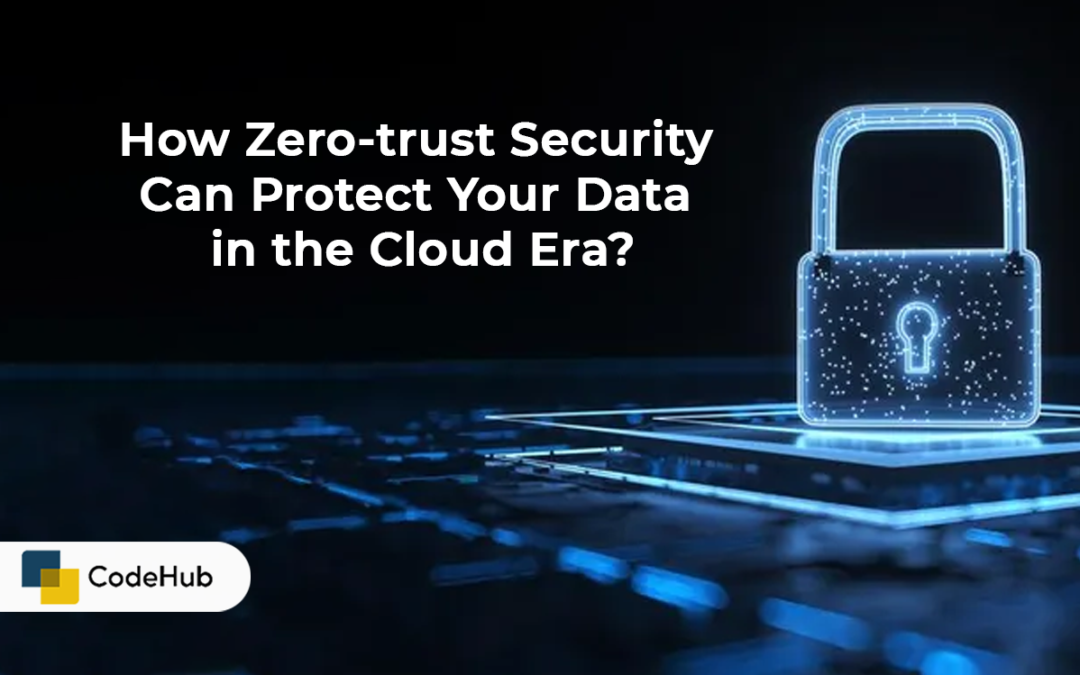Data is the lifeblood of any organization. It fuels innovation, drives decision-making, and enables customer satisfaction. But data also comes with risks. Cyberattacks, data breaches, and insider threats are constantly looming over your data, threatening to compromise its confidentiality, integrity, and availability.
Traditional security models rely on perimeter-based defenses, such as firewalls, VPNs, and network segmentation, to protect data from unauthorized access. However, these models are not sufficient for the modern cloud era, where data is distributed across multiple locations, devices, and services. Perimeter-based security assumes that everything inside the network is trusted, and everything outside is not. This creates a false sense of security, as attackers can easily bypass the perimeter or exploit vulnerabilities within the network.
Zero-trust security is a new paradigm that challenges the assumptions of traditional security models. Zero-trust security operates on the principle of “never trust, always verify”. It assumes that no entity, whether user, device, application, or service, is inherently trustworthy, and requires continuous verification of every request for data access. Zero-trust security also applies the principle of “least privilege”, which grants the minimum level of access necessary for each entity to perform its function.
Zero-trust security can offer a feasible and effective framework for protecting your data in the cloud era. By implementing a zero-trust security strategy, you can achieve the following benefits:
- Enhanced data protection: Zero-trust security reduces the attack surface and minimizes the risk of data exposure by encrypting data at rest and in transit, applying granular access policies, and enforcing content markings and data loss prevention rules. Zero-trust security also enables behavioral detection and insider risk management, which can help identify and mitigate potential threats to your data.
- Improved user experience: Zero-trust security empowers your users to work more securely and productively from anywhere, on any device, without compromising data security. Zero-trust security leverages adaptive authentication and authorization mechanisms, such as multi-factor authentication, conditional access, and identity and access management, to provide seamless and secure access to data and resources.
- Increased business agility: Zero-trust security enables digital transformation and cloud migration by providing a consistent and scalable security posture across your hybrid cloud environment. Zero-trust security also supports data governance and compliance by helping you discover, classify, label, and manage your data throughout its lifecycle.
To implement a zero-trust security strategy for your data, you need to follow a systematic and holistic approach that covers the following elements:
- Data classification and labeling: You need to discover and identify your data assets across your organization and classify them by their sensitivity level. You can use tools such as Microsoft Purview to automate data discovery and classification, and apply sensitivity labels to your data.
- Information protection: You need to apply encryption, access control, and content markings to your data based on their sensitivity labels. You can use tools such as Microsoft Information Protection to protect your data wherever it resides or travels, and apply rights management and encryption to prevent unauthorized access or sharing.
- Data loss prevention: You need to monitor and control data activities and movements that may pose a risk to your data security or compliance. You can use tools such as Microsoft Data Loss Prevention to detect and prevent data leakage, oversharing, or misuse of sensitive data.
- Insider risk management: You need to analyze and respond to risky or malicious behaviors that may indicate a data breach or insider threat. You can use tools such as Microsoft Insider Risk Management to leverage behavioral signals and artificial intelligence to identify and mitigate insider risks.
- Data governance: You need to manage and optimize the lifecycle of your data, from creation to deletion. You can use tools such as Microsoft Data Governance to limit the propagation and duplication of sensitive data, and delete data that is no longer needed or relevant.
Zero-trust security is not a one-time project, but a continuous journey that requires constant monitoring, evaluation, and improvement. You can use tools such as Microsoft Zero Trust Assessment to measure the maturity level of your zero-trust security implementation and receive guidance and recommendations to advance your security posture.

